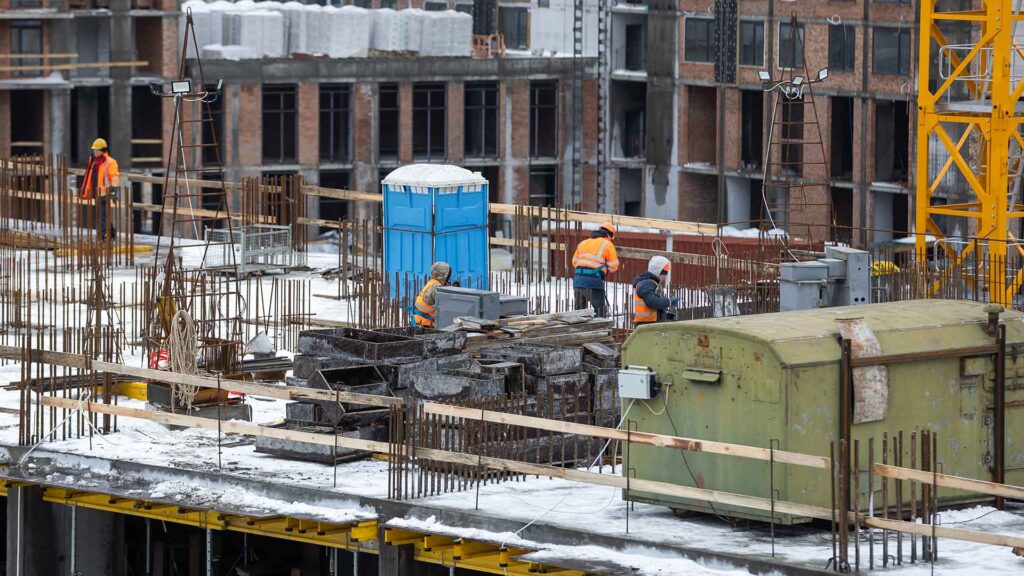The construction industry in California is facing a significant challenge in 2025: the rising cost of construction materials. This issue has far-reaching implications for construction workers, companies, and consumers alike. Understanding the causes, effects, and potential strategies to navigate this crisis is crucial for industry professionals.

The Trend: Continued Increase in Construction Material Costs
Over the past several years, the cost of essential construction materials such as lumber, steel, and concrete has been steadily rising, and this trend is expected to continue in 2025. Several factors contribute to this ongoing increase:
Factors Driving the Increase
- Supply Chain Disruptions
- Global events, transportation bottlenecks, and raw material shortages have created an unstable supply chain, leading to price surges.
- Increased transportation costs and delays further compound the issue.
- Inflation
- The overall rise in prices across the economy contributes to the increased cost of raw materials.
- Inflationary pressures affect energy, transportation, and manufacturing costs, all of which are critical in construction material production.
- Increased Demand
- A surge in residential and commercial construction projects has heightened demand for materials, pushing prices even higher.
- Large-scale infrastructure projects backed by state and federal funding also contribute to the strain on material supplies.
Impact on the Construction Industry
The rising cost of materials has significant consequences for various stakeholders in the construction industry:
- Higher Project Costs
- Builders and developers face skyrocketing expenses, making it more challenging to complete projects within budget.
- Some projects may experience delays or cancellations due to unmanageable costs.
- Increased Prices for Consumers
- The additional costs are often passed on to consumers, making new homes, commercial buildings, and renovations less affordable.
- Housing shortages could worsen as fewer new homes are built at reasonable prices.
- Reduced Profit Margins
- Construction companies must absorb higher costs, leading to shrinking profit margins.
- Some businesses may struggle to remain financially viable in the long run.

Implications for Construction Workers
While companies grapple with these economic pressures, construction workers face their own set of challenges:
- Wage Stagnation
- With companies facing reduced profits, wage increases for workers may become less frequent.
- Even skilled laborers may find it difficult to negotiate higher pay in an increasingly competitive job market.
- Job Security
- If construction costs continue to rise, some companies may halt hiring or even lay off existing employees.
- Reduced project availability could mean fewer work opportunities for both skilled and unskilled laborers.
- Skills and Adaptability
- Workers who specialize in using alternative materials or cost-saving construction methods may be in higher demand.
- Adapting to new construction technologies could provide job security and potential wage growth.
Additional Considerations
Several external factors could further impact material costs and the construction industry:
- Regional Variations
- Material prices can vary across different regions in California due to factors like local demand, transportation costs, and supplier availability.
- Material Substitutes
- Companies may explore alternative materials to lower costs, changing the types of skills in demand within the industry.
- Eco-friendly and sustainable building materials may become more prominent as cost-effective solutions.
- Government Policies
- State and federal policies on tariffs, trade restrictions, and infrastructure spending can directly impact material costs.
- Legislative decisions regarding housing and commercial development may influence the availability of construction projects.
Strategies for Construction Workers to Adapt
Despite these challenges, there are proactive steps construction workers can take to stay ahead in a changing industry:
- Stay Informed
- Keep up with industry news, material price trends, and government policies affecting construction.
- Upskill
- Learn how to work with alternative materials and new construction technologies to stay competitive.
- Consider obtaining certifications in specialized construction techniques to increase job security.
- Network
- Connect with industry professionals, unions, and trade organizations to stay informed about job opportunities and wage trends.
- Advocate for Fair Wages and Working Conditions
- Join professional organizations or unions to push for policies that protect workers and ensure fair wages.
- Participate in discussions about improving industry standards and addressing economic challenges.
Conclusion
The rising cost of construction materials presents significant challenges for California’s construction industry in 2025. However, by staying informed, adapting to industry changes, and leveraging networking opportunities, construction workers can navigate these obstacles effectively. Companies and policymakers must also work together to find sustainable solutions that balance material costs, worker wages, and industry growth. With the right strategies in place, the construction sector can continue to thrive despite economic pressures.





